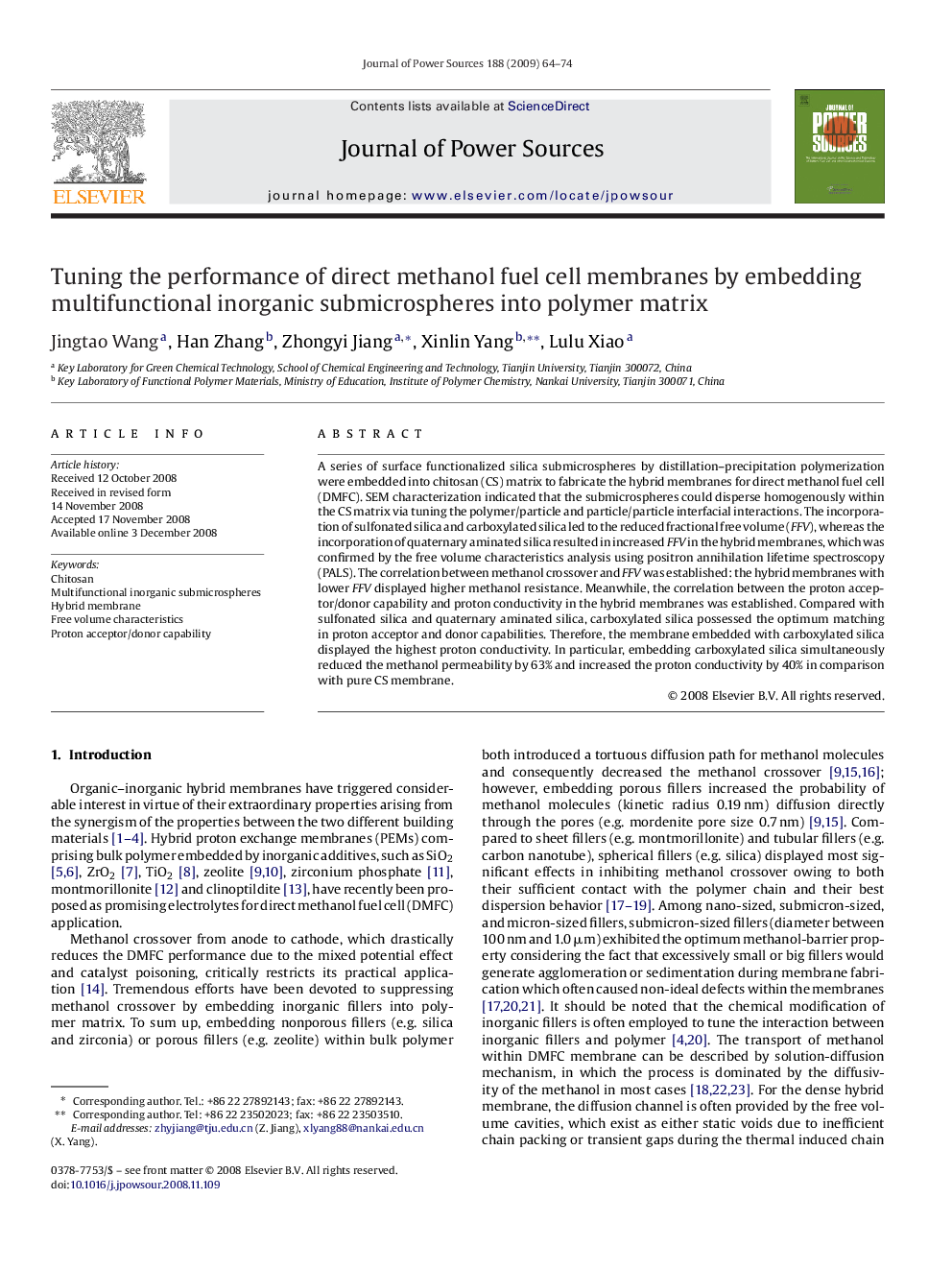| Article ID | Journal | Published Year | Pages | File Type |
|---|---|---|---|---|
| 1294315 | Journal of Power Sources | 2009 | 11 Pages |
A series of surface functionalized silica submicrospheres by distillation–precipitation polymerization were embedded into chitosan (CS) matrix to fabricate the hybrid membranes for direct methanol fuel cell (DMFC). SEM characterization indicated that the submicrospheres could disperse homogenously within the CS matrix via tuning the polymer/particle and particle/particle interfacial interactions. The incorporation of sulfonated silica and carboxylated silica led to the reduced fractional free volume (FFV), whereas the incorporation of quaternary aminated silica resulted in increased FFV in the hybrid membranes, which was confirmed by the free volume characteristics analysis using positron annihilation lifetime spectroscopy (PALS). The correlation between methanol crossover and FFV was established: the hybrid membranes with lower FFV displayed higher methanol resistance. Meanwhile, the correlation between the proton acceptor/donor capability and proton conductivity in the hybrid membranes was established. Compared with sulfonated silica and quaternary aminated silica, carboxylated silica possessed the optimum matching in proton acceptor and donor capabilities. Therefore, the membrane embedded with carboxylated silica displayed the highest proton conductivity. In particular, embedding carboxylated silica simultaneously reduced the methanol permeability by 63% and increased the proton conductivity by 40% in comparison with pure CS membrane.
